To accomplish the business goal and project objective, software engineers look for the best software development life cycle (SDLC) model with features and methodologies. These software development models consider several attributes, including project objective, deadline, cost, stakeholder reviews, etc. Companies must deploy an ideal model after considering the project’s complexity, overall size, and how well it can integrate with the existing system. By leveraging a perfect software development model, the final result satisfies clients and people who have invested in your firm.
Both experienced developers and budding enthusiasts must know the range of software development models that meet the business requirements. Let’s discuss the top SDLC models every developer must learn to be part of the dynamic software engineering world.
Waterfall Model
The Waterfall model is one of the simplest software development models. The waterfall model is a well-researched, though-oriented, and sequential software development model. The prerequisite of this software development model is to schedule and plan all similar actions before starting with the development phase. This model is the oldest of all kinds of development methodologies and provides a linear and structured approach. The model is segmented into several stages, all interlinked to each other.
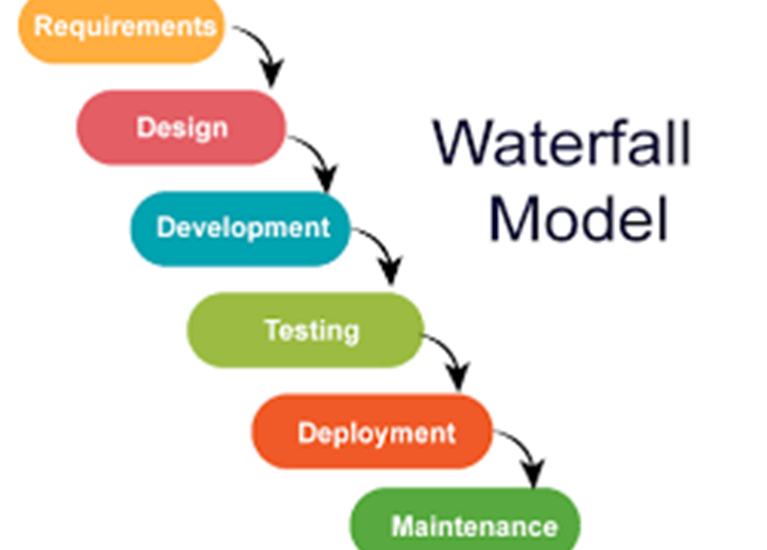
Benefits of the Waterfall model
- The waterfall model is quite manageable and understandable.
- Test scenarios ensure complete transparency.
- The best software developers can easily manage tasks within the Waterfall software process model.
- All processes are managed within the waterfall model with no chance of losing valuable information.
Drawbacks of the Waterfall model
- Making alterations in the waterfall model is quite tricky.
- If you have a complex, lengthier, or more significant project, this model is not preferred
- Monitoring the progress within the stages is not easy.
V Model
The Validation and Verification model, or V Model, is the enlarged version of the Waterfall model with the addition of early test planning. Rather than moving down linearly through various software development phases, this model moves down, creating a “V” shape. The development process doesn’t move in a straight line; rather it rides in the upward direction post-deployment. Like the Waterfall model, the team can only begin with the next stage after completing the existing one. This feature makes this software development model ideal for short projects having fixed and well-structured documented requirements.
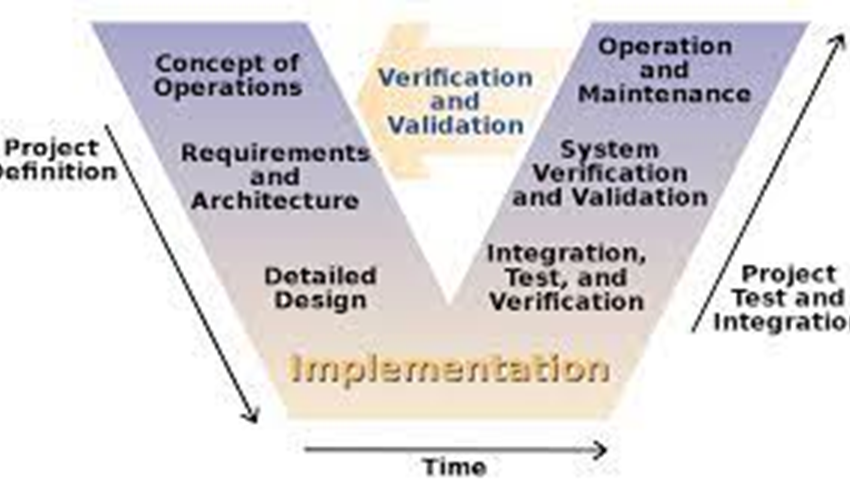
V-Model Advantages
- V-Model lets the team of the best software developers detect errors regarding the specifications, code, and architecture in the development phase only.
- The addition of early test planning makes the V-Model successful as compared to the Waterfall model.
V-Model Disadvantages
- Unfortunately, fixing errors is quite tricky in V-Model due to the lack of a clear path for resolving these problems.
- Since the V-Model is linear, it is not very flexible.
Incremental model
Like its name, the incremental system is segmented into small phases and the models are delivered one after another. It is one of those SDLC models where software is delivered in parts to the clients. Thus very few changes are considered when new modules are added to the iterations. The development stage consists of two phases, including parallel and sequential. Due to several repeated cycles, incremental models can prove an expensive affair, while a similar method improves the overall delivery speed. The developers prefer using this model instead of other software development models when the project requirements are fixed.
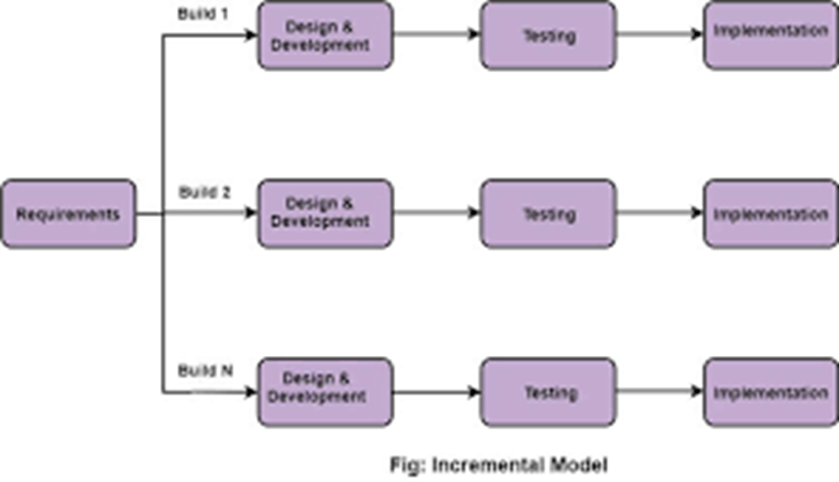
Benefits of using the Incremental model
- The incremental model is quite flexible and changes quickly as per the scope.
- The overall initial delivery cost is relatively low as compared to others.
- Detecting any software problems in the early stages of the model is relatively easy.
- The customers can quickly respond to every phase or milestone achieved.
Drawbacks of the Incremental model
- It is crucial to have a clear and detailed picture of the entire system before starting with the development phase.
- Expensive as compared to the waterfall model
- Require dynamic design
- Rapid Action Development (RAD) Model
Rapid Action Development (RAD) Model
The Rapid Action Development (RAD) model focuses on quick development and iteration and motivates users’ feedback throughout the development process. RAD is based on prototyping and iterative development with enough scope for planning. This software development model consists of various phases, including data modelling, process modelling, business modelling, and app generation testing. This model is ideal for software with UI requirements. Moreover, the RAD model is deployed when it is crucial to design a system with scope for modulation in 2-3 months.
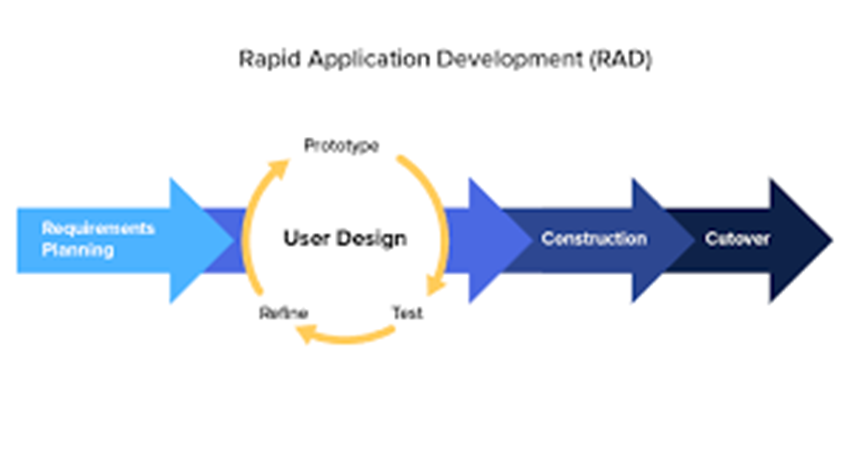
Benefits of the RAD model
- It improves the reusability of components
- It promotes customer feedback
- The model lowers the overall software development time
- Comes with zero integration issues
Drawbacks of the RAD model
- It is more dependent on the modelling skills
- It requires a solid and experienced team which is well-versed with the business requirements
- RAD builds a modularized system.
DevOps Integration
DevOps isn’t just a methodology; it’s a significant shift that harmonizes development and operations. DevOps integration brings development and operations teams together with a shared vision to manage workflows and improve the overall delivery speed of the software. By breaking down silos and focusing on collaboration, DevOps reduces the development cycles and ensures seamless integration.
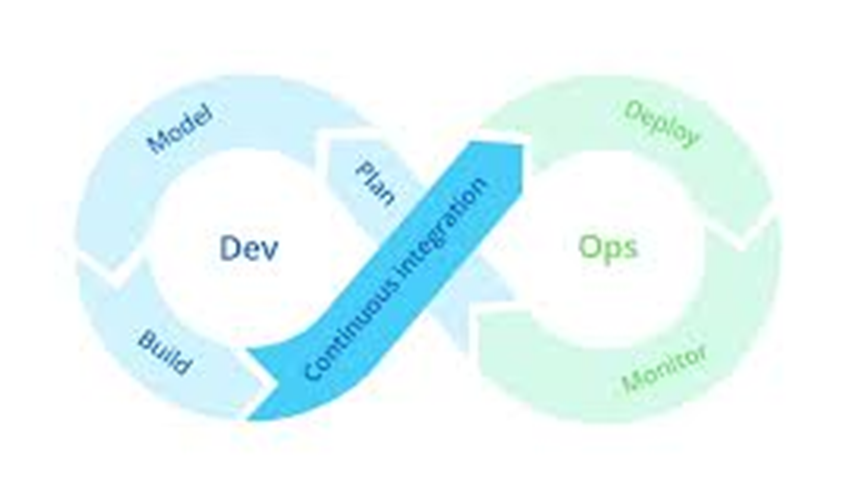
Advantages of DevOps Integration
- DevOps improves collaboration and leverages the best practices for seamless releases.
- It ensures improved system reliability, secured integration and promotes continuous learning.
Drawbacks of DevOps Integration
- Cultural resistance might be challenging, and initial implementation disruptions can also slow the process.
- Deploying this model within large organisations is a little complex and skilled personnel are required to integrate the solutions.
Selecting the Right Model: A Developer’s Confusion
In the diverse landscape of software development models, the success does not lie in one-size-fits-all-strategy; rather an ideal model for the right project is the need of the hour. The developers must pay attention to every aspect and select and tailor methodologies as per the project’s scope. The companies can connect with a software development company to discuss their business ideas, as the technical experts there will help make the right and more meaningful selection.
